
Camel Farm: Production and Management of Camel
October 3, 2022, 9:37 am
The camel is a large pseudo-ruminant mammal with one or two humps. The camel is found in desert regions of Africa and Asia.
The Arabian camel (Camelus dromedaries) has one hump and it is native to Africa, Saudi Arabia and southwestern Asia. The Bactrian (Camelus bactrianus) camel has two humps and is found in Central Asia.
Camel Farm: Production and Management of Camel
Camels have been reported to live for up to 50 years, weigh 250kg to 680kg and grow to over 2 meters in height. The camel is regarded as ‘Ship of the Desert’ because of the way the camel walks, just like a giraffe, the camel moves both legs on one side of its body at the same time, then the other side. The rolling motion resembles a ship at sea.
Camels are usually dark brown to dusty grey; however, white camels do occur. Camels are often ill-tempered and are known to spit at people, bite and kick.

General Characteristics of a Camel
These are the features of a camel:
- Possession of at least one hump
- Long curved necks
- Broad, large feet
- Tufted tails
- Four teats rather than two
- Large broad ‘elastic’ pad—hooves are 2 fingernails-like toenails on front of pad
- Nostrils are slit-like—can be closed to protect against blowing sand. Special nasal cavities moisten air on way in, trapping moisture going out
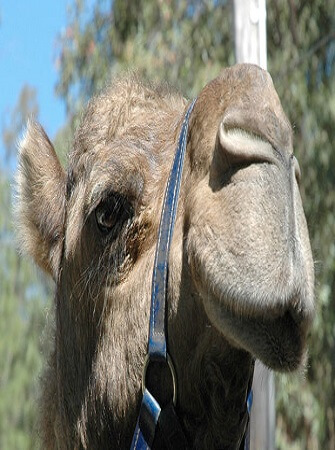
Uses of Camel
The following are the uses of camel:
- Provision of Food—milk and meat. Camel milk is a staple food of desert nomad tribes. The camel’s milk is richer in fat and protein than cow milk. Camel milk cannot be made into butter in the traditional churning method. It must be soured first, churned and a clarifying agent added. The milk can however be readily made into yoghurt which has many health properties.
- Hair—for textiles, rug, ropes, garment, tents, purses etc.
- For traction—working animals. The mature camel is for carrying loads, ploughing the land. The camels in caravans are employed in moving salt block across the desert. Camels supplies power for threshing grains and sugarcane and oilseed crushing mills for pulling carts.
- For sports—camels used for racing can run about 14-16km/hour
- Dried dung—used as fuel.
Adaptive Features of Camel to Desert Life
The following are ways by which the camel has adapted to living a desert life:
- The camel feeds on desert vegetation and can go without water for up to three weeks

- Its body temperature, unlike that of most mammals, is not constant; instead, it rises during the heat of the day, eliminating the need to sweat or pant and thus conserving water
- The camel has an efficient way of conserving water by excreting little water in its urine and feces evident in the very dry dung
- The camel has flat, broad feet that enable it to stand on top of sand without sinking. Each foot has two toes with small nails
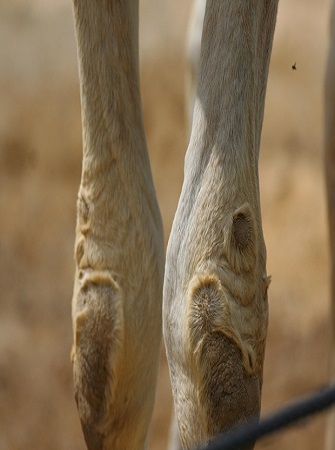
- Tough, horny pads are on the feet, chest, thighs, and knees to protect the skin from burning when the camel lies down on the sand
- The slit-like nostrils can be closed during sand or dust storms
- The camel’s hump contains fat (not water), which sustains the animal during times when food is scarce. If the camel goes for a long period without food, the hump will collapse. It take three to four months of normal eating for the hump to return to its normal size and shape. The hump is not for storing water as erroneously believed by some people
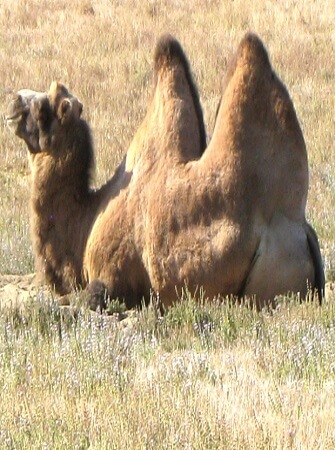
- They have a double row of long curly eye lashes to keep sand and dust out and a third eyelid acts as a windshield wiper, moving from side to side to wipe the sand away
- Camels also have a ridge and thick bushy eyebrows to shade their eyes from the sun
- Even though the camel’s ears are quite small, the camel has excellent hearing. It has fur inside its ears to keep sand and dust out
- The camel can close its nostrils to keep sand out
Feeding the Camel
The stomach of the camel is partitioned into three chambers instead of four as found in the ruminant. The camel however chews the cud. In the wild, camels get most of the water they need from the plants they eat but in captivity, they might not get enough.
They need 30 to 40 liters of water per day but if they are extremely thirsty they can drink 100 liters in 10 minutes. Camel’s natural diet is quite high in salt, so in captivity they should be provided with a salt block to lick.
Camels will eat salty plants, thorns, twigs, leaves, grasses and other plants that grow in the desert. Camels can eat hard and thorny plants which cannot be eaten by other animals.
Camels are like goats and can browse, eating bushes and the branches of trees. Camels can also graze on grass but browsing is more preferred. The camel browses or grazes for 8 hours each day and will take another 6 to 8 hours to chew the cud.

They can be fed like cattle and will eat straw, hay, sillage, millet, sorghum, bran and oil-seed cakes. Camels can reach branches of trees and bushes to a height of 3 meters. Camels eat these woody plants by using its strong canine teeth to crush the wood.
In the dry season when feed become scarce, the camel can live on the fat stored in the hump. It can survive in this way for a very long period and will lose weight as the fat is used. A camel can lose up to 200kg in weight during this period.
Water Consumption in Camel
Camel is well known for its ability to withstand thirst and to go without water for a long time. It can do this because it can change its body temperature to as low as 34°C and has high as 41°C.
Camels produce small amounts of thick concentrated urine. If the camel is kept near a water point or a river, it may drink small amounts of water daily. In cold weather, and when green feed is available, the camel may not drink water for months because it can get all the water it needs from the plants.
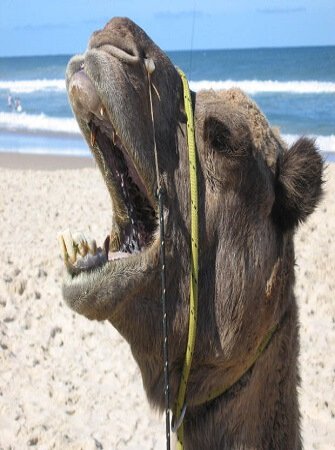
In the dry season, camels drink up to 60 liters of water every 10 days. A thirsty camel in a hot dry season can drink up to 200 liters of water in one go. Excess water is stored in vessels around the stomach
Salt Consumption in Camels
Salt is very important for the camel. It needs eight times as much salt as do cattle and sheep. A camel needs 1kg of salt in a week and it is advisable to leave salt with camels every week.
Camel Breeding and Reproduction
The female camel attains puberty at four years of age while the male reaches maturity about the age of five. The camel’s gestation period is one year with a one year nursing period. Most often, it will have one calf-producing one calf in three years.
When calves are born, they weigh 30 to 40kg but by the time they are adults, they weigh around 500 to 600kg. Camels get to this size at 6 to 7 years but can live up to 50 years. Calves are weaned when they are about 6 to 12 months old
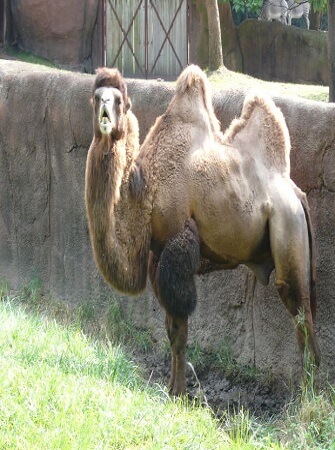
During the breeding, especially during the cooler or wetter seasons, the male ruts or musth. In rutting or musth condition, the male develops a dulaa (sack-like extension of the soft palate) which is triggered by rising testosterone levels.
A mating call is produced when the male blows through the dulaa to push it outside the mouth (looks like a red balloon) and uses saliva to create a low gurgle. The size of dulaa indicates male’s virility to female. The male also marks its territory with secretions from poll glands (on back of neck, between ears), rubs neck on any solid object, urinates on own tail and swishes it over its back.
The urine contains female-attracting pheromones. The male also exhibits aggression towards other males and it becomes extremely active—collects a harem with as many as 10 to 20 females.
The female (cow) on the other hand undergoes oestrous cycle in breeding season: receptive 3 to 4 days, non-receptive following 10 days. She bleats to indicate that she is receptive and approaches male, presenting hind quarters. She urinates constantly flipping her tail up and down in short quick movements. Dulaa is also present in female but never extruded.
The bull mates the cow while the cow is in a sitting position.
A pregnant she-camel (cow) is likely to raise the tail upwards whenever she is approached by a male or the handler.
Management of Camels
The following practices ensure good camels production:
- Camels should be separated into groups according to the age of the animals
- Grazing and browsing should be allowed from morning till evening and given supplementary feeds. But newly calved dams with their calves should be allowed to remain on the farm for about one month before they are allowed to graze or browse
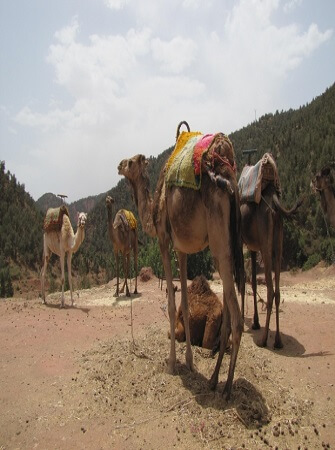
- The bull may be allowed to run with mature non-pregnant cows
- Calves must be allowed access to colostrum
- Camels should be trained at obeying commands when they are two and a half to three years old.
- Camels to be used for load should receive training when they are about 4 years old. Empty saddles are loaded on their backs to get them accustomed to carrying loads
- Castration of the male is made when the male is 4 to 6 years old
- Caution should be observed when handling rutting camels as they may become violent
- Pregnant cows should not be put to work at the last two months of expected parturition and at least three weeks after parturition

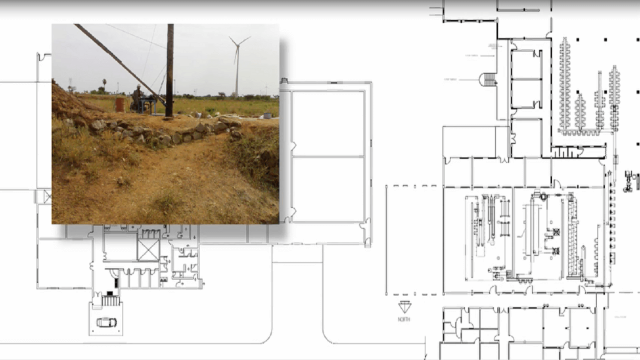

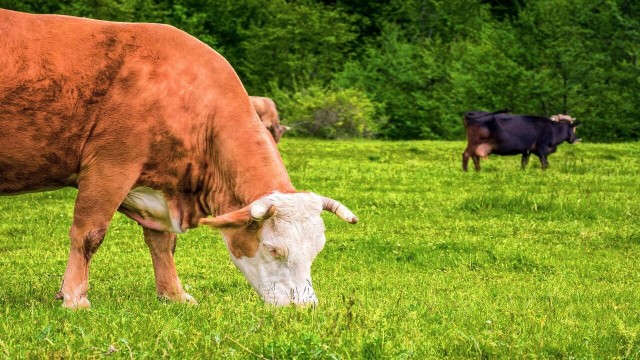
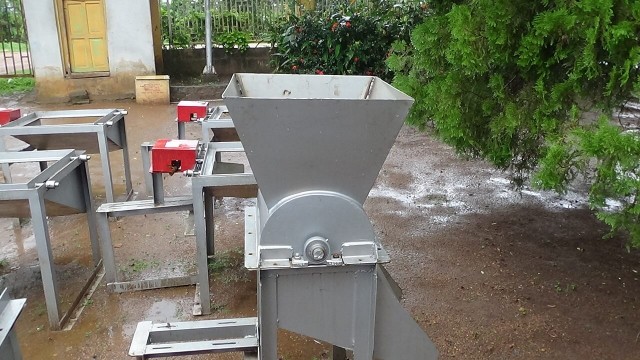
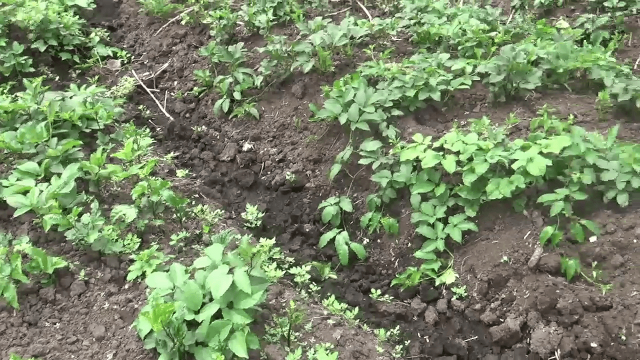



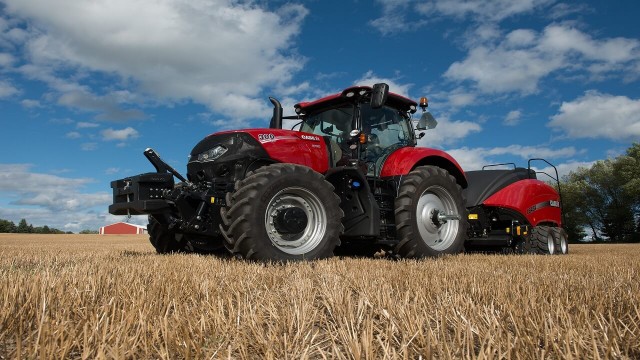


Share This Article: